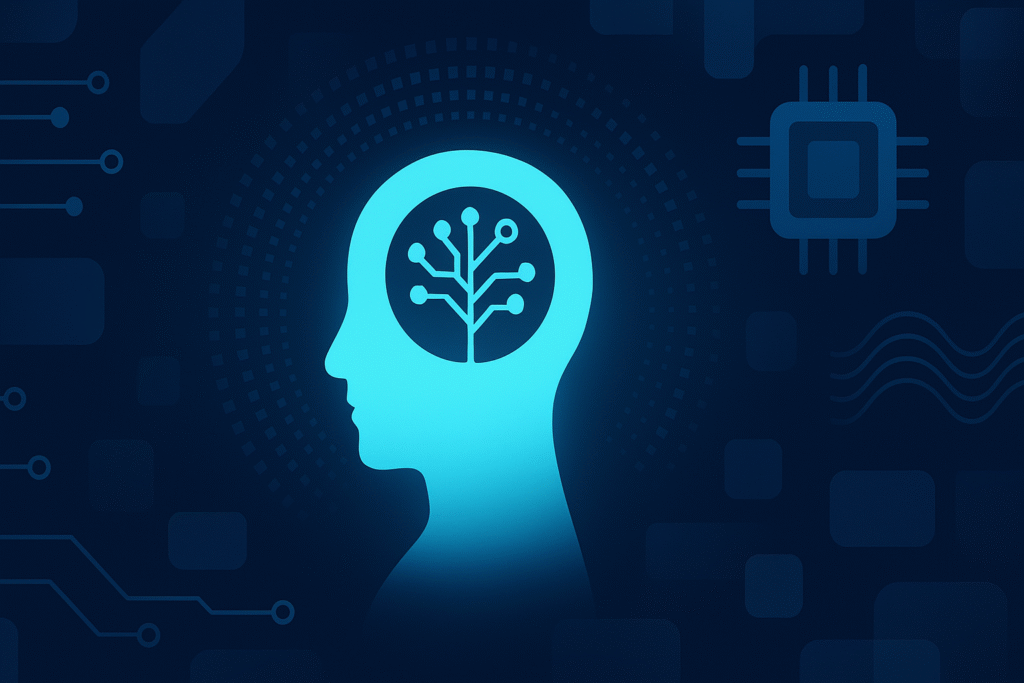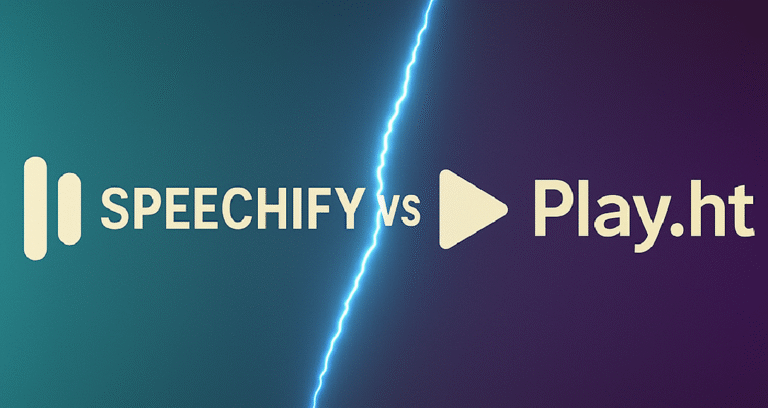In recent years, artificial intelligence has evolved from a futuristic idea into an everyday writing companion. Tools like ChatGPT, Jasper, and Writesonic are helping people learn not just how to write with AI, but also how to use AI to brainstorm ideas, outline faster, and draft content more efficiently. Writers of all kinds—from bloggers to novelists—are discovering new ways to streamline their process without sacrificing quality.
But with this new creative partnership comes a pressing question: Can writers use AI without losing their authentic voice?
As algorithms become more adept at mimicking tone, structure, and even personality, the line between human and machine-crafted prose continues to blur. For many, this raises concerns about originality, emotional connection, and creative integrity. A writer’s voice isn’t just a stylistic choice—it’s their fingerprint on the page. In this blog, we’ll explore how to write with AI in a way that supports your creativity while keeping your voice front and center.
Our AI Writing Tools picks
What Does “Voice” Mean in Writing?
Understanding the Writer’s Voice
A writer’s voice is more than just the words they choose—it’s the distinct fingerprint of their personality, perspective, and rhythm embedded in every sentence. Voice includes tone (whether serious, humorous, or reflective), word choice (simple or complex), sentence structure, and even the pacing of ideas. It’s what makes Hemingway feel stark and direct, while Woolf feels introspective and fluid.
This voice isn’t something artificial intelligence can fully replicate, because it stems from lived experience, emotion, and personal worldview. It’s how readers recognize the writer behind the words, even when the subject matter shifts.
Why Voice Matters More Than Ever
Maintaining that voice is crucial for authenticity. Readers connect with content that feels personal and real—not just grammatically correct or keyword-optimized. When a writer’s voice is strong, it builds trust, evokes emotion, and keeps readers coming back. In a time when AI can produce paragraphs at lightning speed, the challenge isn’t just to write—it’s to sound like yourself. And that makes voice not only a creative signature but a foundation of meaningful connection.

How to Write with AI: A Creative Collaboration Guide
AI as a Creative Companion
When used intentionally, AI can be an incredible ally in the writing process. Tools like ChatGPT or Jasper don’t just spit out full articles—they can act as brainstorming partners, helping you explore angles you may not have considered. Whether you’re outlining a blog post, generating headline options, or experimenting with different tones, AI can speed up the ideation phase and keep the momentum going.
Boosting Productivity and Breaking Through Blocks
One of AI’s most appealing advantages is its ability to boost productivity. Facing writer’s block? A quick AI prompt can help you get unstuck. Running behind on deadlines? AI can generate a rough draft in seconds, giving you something to refine instead of starting from scratch. It reduces the friction between thought and text, allowing writers to stay in flow longer and spend more energy on refining ideas rather than wrestling with a blank page.
Real Examples of How Writers Are Learning to Write with AI
Writers across industries are already benefiting from this collaboration. Content marketers use AI to generate product descriptions and SEO drafts faster. Novelists experiment with plot developments using AI-generated prompts. Freelancers use it to craft pitch templates or client emails. When used with a clear purpose, AI can elevate efficiency and open creative doors—without necessarily replacing the human touch.
Where Writers Risk Losing Their Voice
The Temptation of Over-Reliance
As helpful as AI can be, there’s a growing risk that writers may become overly dependent on it. When you lean too heavily on AI to generate full paragraphs or even entire pieces, your unique perspective can quickly get diluted. It’s easy to fall into the habit of accepting AI’s suggestions without questioning whether they reflect your tone, intention, or message.
Homogenization of Style and Tone
One of the most subtle dangers is the homogenization of content. Because AI tools are trained on massive datasets, they tend to produce “average” or neutral-sounding prose. This can lead to writing that feels safe, formulaic, or overly polished—lacking the quirks, risks, or emotional edges that make a writer’s voice truly stand out. Over time, this may cause your content to blend in rather than stand out.
How AI Edits Can Change Your Voice When You Write with AI
Even well-meaning editing with AI’s help can lead to voice loss. Tools that suggest grammar or tone improvements may unintentionally flatten stylistic choices that give your writing character. A sarcastic aside could be interpreted as “off-tone.” A fragmented sentence might get “corrected” into something more formal. Without careful attention, these small changes can chip away at the originality that makes your writing yours.
In short, AI is powerful—but left unchecked, it can smooth over the very texture that gives your work soul.

Writing Smarter: How to Write with AI Without Losing Your Voice
The First Step: Planning Before You Write with AI
Before involving AI in your writing process, take the time to sketch out your own outline or rough paragraph. This ensures that the direction, tone, and key ideas stem from you—not from an algorithm. AI should be shaping your thoughts, not replacing them. Even a messy bullet list of your core points can anchor your voice throughout the collaboration.
Finding Your Voice While Writing with AI Tools
Some AI tools allow you to “train” them using your previous content. By feeding them samples of your writing—such as blog posts, newsletters, or journal entries—you help the tool understand your voice. While not perfect, this personalization feature can help AI mirror your tone more closely and offer suggestions that feel more aligned with your natural style.
How to Edit AI-Generated Text So It Sounds Like You
Never copy and paste AI-generated text without revision. Instead, treat it like a first draft written by an assistant: useful, but not finished. Reread it aloud. Does it sound like you? Does it reflect your personality or your values? Edit actively—add your phrasing, your rhythm, your turns of phrase. The goal is to polish it until the content sounds unmistakably yours.
Using AI for Ideas, Not Identity
Think of AI as a co-pilot, not the captain. Let it help you expand ideas, fill gaps, or rewrite awkward sentences—but don’t hand over the controls entirely. The more you use AI as an enhancer rather than a ghostwriter, the more control you retain over your voice and message.
Keep a “Voice Guide” or Tone Checklist
Create a simple reference guide that describes your typical tone, sentence style, favorite phrases, and any “don’ts” (like avoiding clichés or buzzwords). Before publishing, compare your draft to this checklist. This extra step helps you maintain consistency and catch any AI-polished edges that don’t quite sound like you.
By staying intentional and hands-on, you can harness AI’s strengths while preserving your most important asset: your voice.
Mastering the Process: How to Write with AI from Draft to Final
Who Really “Owns” the Words?
As AI becomes more involved in the creative process, the question of authorship becomes increasingly complex. When a writer uses AI to generate an outline, complete paragraphs, or refine tone, who truly owns the result? The writer prompted it—but the machine generated it. This blurs traditional notions of authorship, which have always centered on the idea that the writer is the sole originator of the work.
Yet in reality, collaboration has always existed—through editors, co-writers, or even the influence of past literature. Perhaps AI is simply the latest form of creative assistance, albeit a faster and more adaptable one.
Co-Writing or Compromising?
Some argue that writing with AI is a compromise—a dilution of pure creativity. Others see it as an evolution, a way to break past the limitations of a single human mind. In this view, AI doesn’t replace the writer; it becomes a sparring partner, pushing ideas forward, helping refine the message, and challenging stagnant habits.
The truth likely lies somewhere in between. Authenticity still matters, and so does intentionality. Using AI doesn’t mean forfeiting your identity—it just requires a stronger commitment to preserving it.
Embracing Change Without Losing Individuality
As the landscape of writing evolves, so too must our understanding of what it means to be a writer. Creativity is no longer limited to what we can type with our own hands. But the core remains: it’s still your story, your perspective, and your voice that give meaning to the words.
AI may be a powerful tool, but it’s your humanity that makes the writing worth reading. The challenge—and opportunity—is to embrace this new era of co-creation while never letting go of what makes your writing unmistakably your own.

Conclusion: Writing with AI, Authentically
Intentionality Is Everything
In a world where content can be generated with a single prompt, the most valuable thing a writer can bring to the table is intentionality. Using AI shouldn’t be about cutting corners—it should be about amplifying creativity, accelerating the process, and making room for deeper expression. The key is staying conscious of your voice at every step.
Let AI Support, Not Speak for You
AI can’t replace your unique experiences, your instincts, or your perspective. Those are the things readers connect with—not the polished structure or grammatically perfect paragraphs. When you use AI thoughtfully, it becomes a creative ally. But when you let it take over, your writing risks sounding like everyone else’s.
Final Thought: Make Your Voice the Loudest in the Room
Experiment. Play. Explore what AI can do—but always come back to what only you can say. Let your voice guide the machine, not the other way around. After all, the most compelling writing in this new era won’t be the most efficient—it will be the most authentic.



